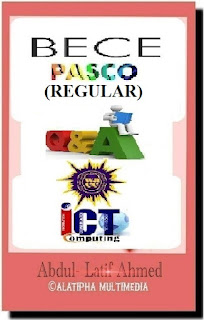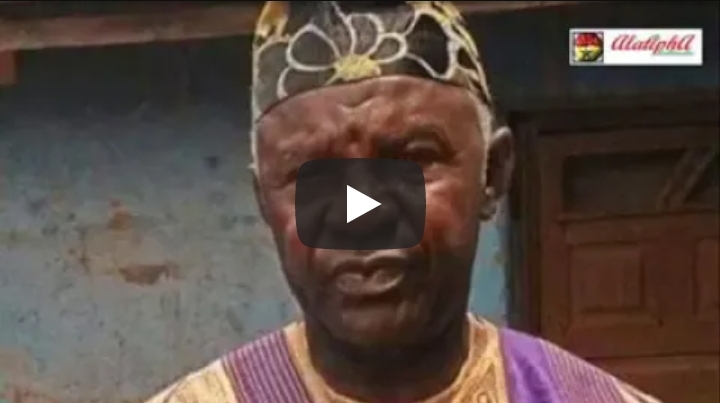Aptitude Test Q&A for GES Promotion - Practice 3
Multiple Choice Questions
1. What law(s) established the Ministry of Education?
2. When was Ministry of Education formed?
3. All the following are agencies under the Ministry of Education except?
4. Who was the first Minister of Ministry of Education in Ghana?
5. Which of the following is not a core function of the Ministry of Education?
6. Which of the agencies of the MOE is considered as the parent Agency?
7. The mission of the MOE is to provide Education with emphasis on the following except?
8. When was the GES established?
9. All the following Decrees, Act or Laws established the GES except?
10. Which of the following is not part of the 3 Autonomous body at the pretertiary level in GES?
11. Which of the following is responsible for issuing license to teachers?
12. The following are functions of the National Inspectorate Board except?
13. Which of the following constituent is not part of the inspectorate board?
14. Who is the Secretary to the National Inspectorate Board?
15. Which of the following is the governing body of GES?
16. Which of the following is not a constituent of the National Teaching Council?
17. The process of integrating and educating the physically challenged in the general school system is called?
18. All the following are basic principles of inclusive education except?
19. Which of the following is not a component of the Educational system?
20. Which of the following is not a determinant of Educational outcomes?
21. The following are characteristics of a good tone of a school except?
22. Which of the following is not a type of curriculum Design defined by Longstreet and Shane?
23. Which of the following pairs is wrong?
24. Which of the following levels does not fall under cognitive domain of learning?
25. Which of the following levels does not fall under affective domain of learning?
26. According to William and Flora Hewlett a set of competencies students must master in order to develop a keen understanding of academic content and apply their knowledge to solve problems in the classroom and on the job is referred to as
27. All the following are core skills for deeper learning except?
28. Which of the following assumptions is part of Maslow’s Need Hierarchy theory?
29. Which of the following best describes the arrangement of Maslow’s levels of needs?
30. Which of the following is not a component of motivation according Arnold et al (1991)?
31. Which of the following is not a principle for teaching?
32. The two main methods of teaching are?
33. The process of quantifying an individual’s achievement, personality, attitudes, habits and skills is?
34. All the following are characteristics of measurement instrument except?
35. The process of setting strategic goals for management to achieve in an organization is termed?
36. The process of using allocated resources to achieve strategic goals in an organization is termed as?
37. All the following are referred to as management levels in education except?
38. Range of activities connected with organizing and supervising the way an organization functions is termed?
39. Administration in GES is more concerned with the following except?
40. The art of motivating a person or a group of people to act towards achieving a common vision is?
41. Where the leader sets the target or goal and uses rewards and punishment to make people achieve it is?
42. Where the leader creates inspirational vision and motivates people to meet those goals through effective communication is?
43. The process of absolutely transferring decision making power and responsibility from the central authority to the smaller units of an organization is a form of decentralization called?
44. The process of reducing of the power of a central authority and redistributing it across the different levels of an organization is a form of decentralization called?
45. The guiding principle of how an organization or government intend to conduct its services to achieve a rational outcome is?
46. Which of the following is not an Educational Policy in Ghana?
47. Which of the following is not an advantage of the free school feeding?
48. All the following are characteristic of a good policy except?
49. Which of the following is not a policy or programme under the Akuffo Addo Administration from 2016-2020?
50. The following are some of the conditions to be satisfied before a school can access the capitation grant except?
True/False
51. John Locke postulated that the mind of a new-born baby was blank (tabula rasa) was later discounted.
52. Language development starts from the womb.
53. Behaviors of less complexity are always easier to teach than those at higher levels.
54. The purpose of the content-by-behavior blueprint is to help teachers discover behaviors they may have failed to include in their lesson plans.
55. A good reason for stating the level of performance in a behavioral objective is to provide some way to determine whether the behavior has been obtained.
56. An authentic objective is one which reflects behaviors most like those needed for living in the “real” world.
57. Tacit knowledge represents what works and is discovered through everyday experiences over a long period of time.
58. Reports from educational groups have called for an increase in the number of school hours as well as a higher standard in grading.
59. Unobserved activities, such as mental creations or activities occurring only in the learner's mind, constitutes evidence that learning has occurred.
60. "Given five quadratic equations, the students will be able to solve the equations correctly in 80% of the cases." This statement is an example of a behavioral objective.
61. Criterion level is used interchangeably with level of proficiency.
62. Audience, conditions, and criterion level are the three essential components of a behavioral objective.
63. Authentic tests ask learners to display their skills in a situation similar to a real-world setting.
64. Many lower-order behaviors must be learned before higher-order behaviors can be attempted.
65. The cognitive, affective, and psychomotor domains are mutually exclusive, that is behaviors listed in one domain are not needed to attain those listed in other domains.
66. Some researchers and educators believe that intelligence can be influenced through instruction in specific areas.
67. Compensatory instruction is designed to help a student gain needed information or skills in order to benefit from planned instruction.
68. Students from low SES (socioeconomic status) homes have generally had a good deal of experience with the same kinds of activities that go on at school.
69. Students need successful horizontal relationships so they can compare themselves with others.
70. It is more important to know a student's general ability and intelligence rather than his or her specific aptitudes.
71. All anxiety interferes with learning.
72. Some researchers claim that humans have specialized abilities which influence general performance.
73. Goals are usually derived from objectives and provide direction as to what strategies should be used.
74. Social class is a less important factor in educational achievement than is race/ethnicity.
75. Learning styles are stable across children and rarely vary according to race or culture.




.png)



























Comments
Post a Comment